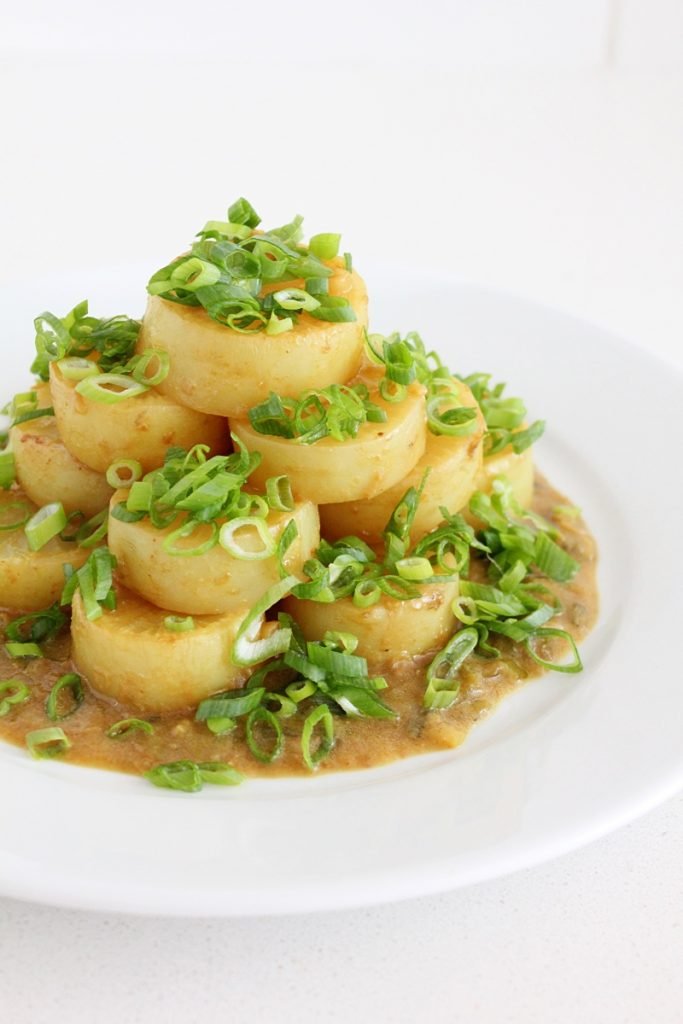
Daikon radish as described by my quietly kind (and British) brother-in-law:
“It’s a mixture between potato and radish, it’s lovely” (or oh-some, I can’t remember, he’s sort of Canadian-ized now).
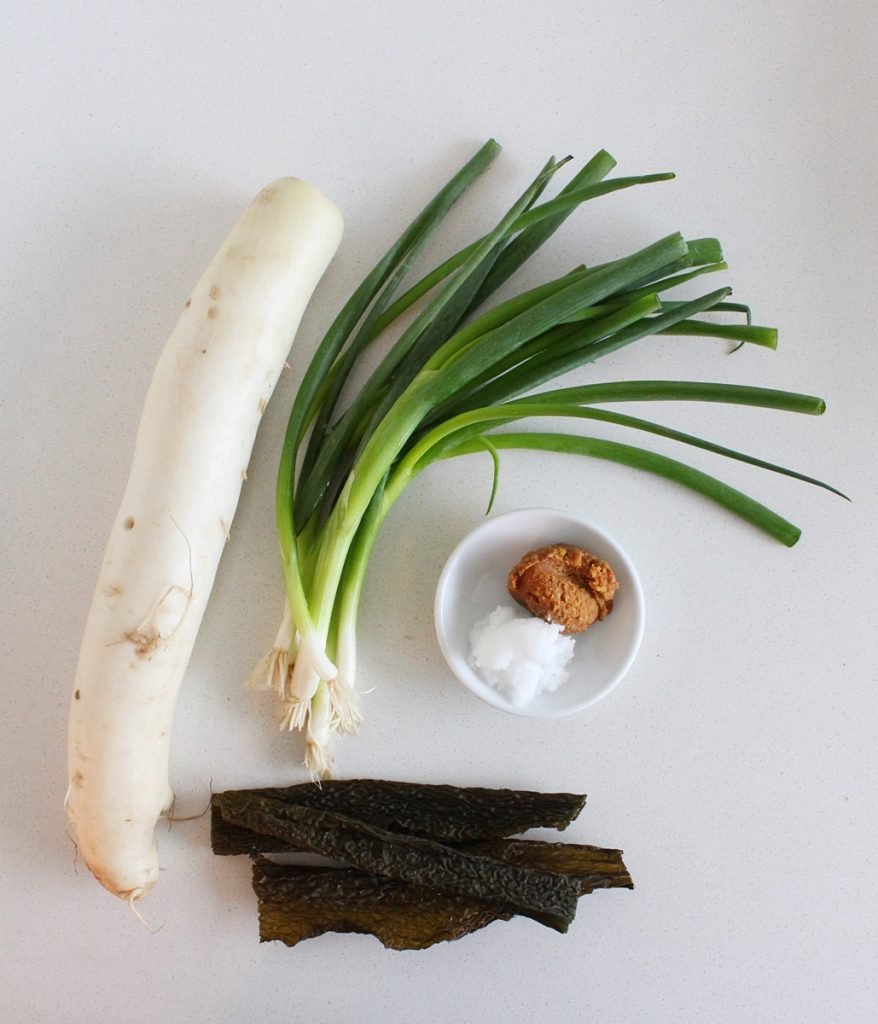
My response, before he had even finished the sentence:
“But it’s not potato! It’s actually just a large radish, which is cruciferous, like kale. It’s low glycemic and so good in place of potatoes in soups and stuff.”
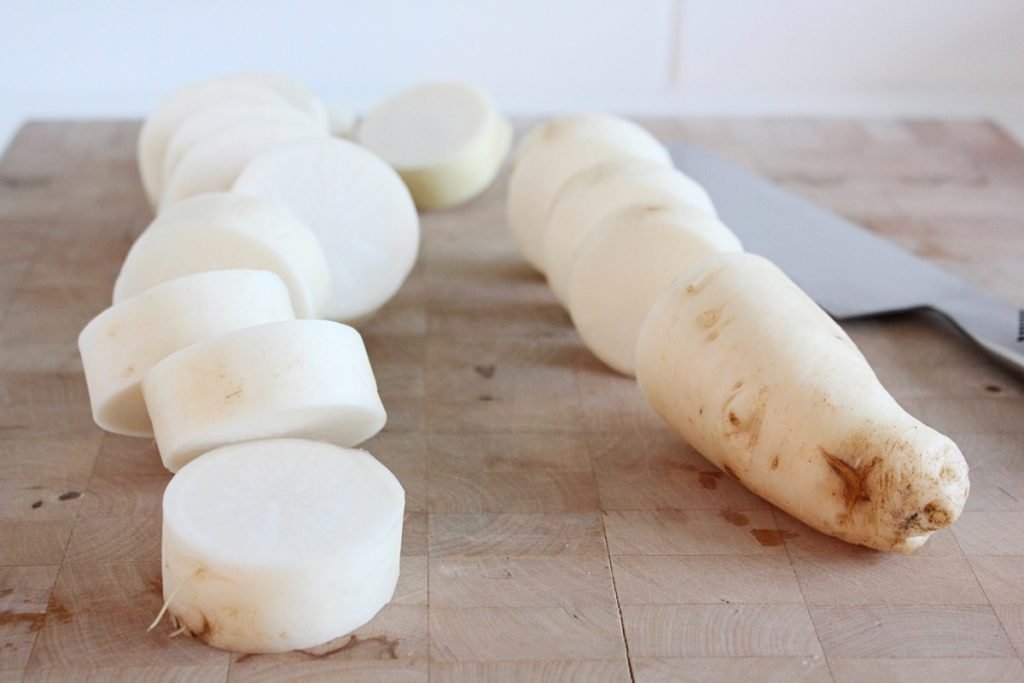
I like to think I’m not a know-it-all (or a jerk) most of the time, just deeply enthusiastic about certain (many) things. And I get really excited when people are as excited as I am about food, especially when they are raving about the taste of something and might not know it’s also quite healthy.

But sometimes I come off as one of those big dogs who means well but winds up flattening the kids it really just wanted to play with. Sorry GB, I can’t promise it won’t happen again, but I’ll be sorry next time too.

Anyone who has spent any length of time in Japan (like my recently verbally flattened brother in law and sister) knows just how good daikon can be. Before studying nutrition, I had only really used it as a garnish while working in restaurants. I would julienne it and store it in cold water to crisp it up. By the end of service it would smell like someone died in the water because raw cruciferous veg has the tendency towards terrible smells when lacking optimum freshness (anyone tried day-old kale juice?).

So I thought of it as a crisp watery garnish to serve with something that needed a bit of a palate cleanse. It does this well, but to think this is all that daikon is capable of is an insult to radishes everywhere.
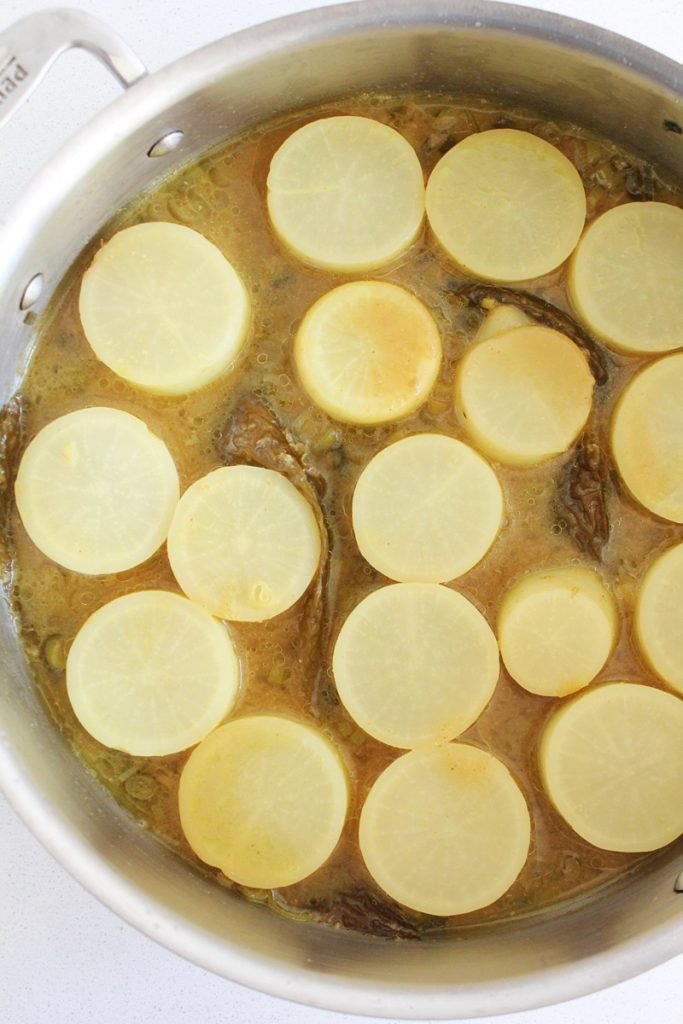
My husband (who spent several years in Japan before I met him) introduced me to cooked daikon. We ordered it when we were out one night at a nice Japanese restaurant and I could hardly believe it was the same vegetable. Not nearly as watery and radish-y as I was expecting, and yes, also very potato-y. To this day, I rarely make a brothy vegetable soup without adding some big hunks of daikon.
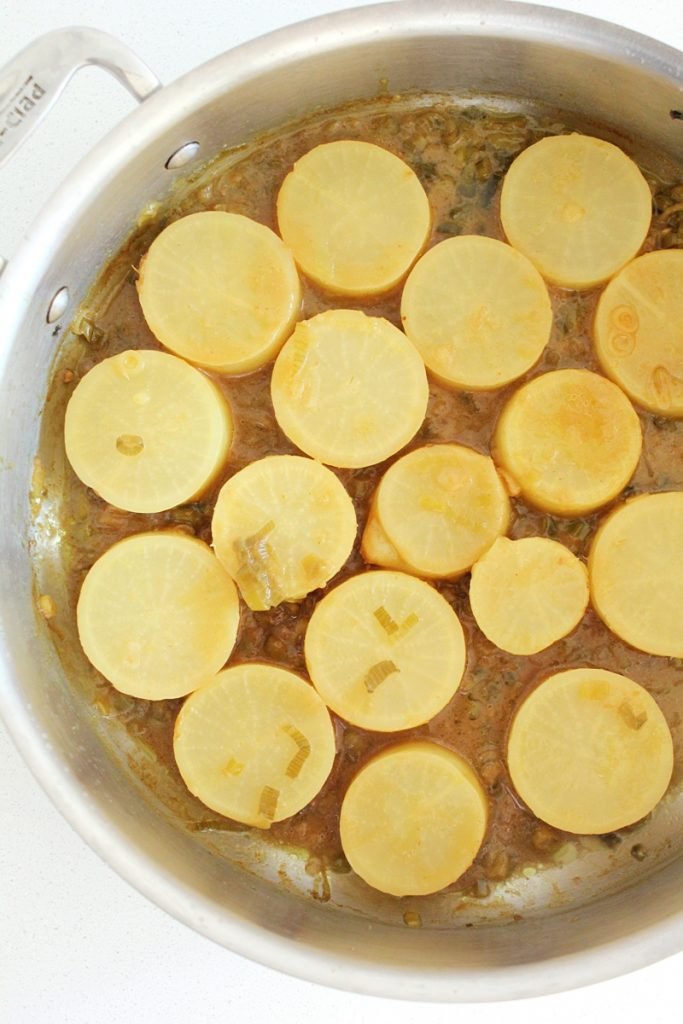
You don’t have to peel it (nutrients live there), just chop it into rounds and braise it in something delicious like soup. Or this recipe, which saves you from the task of making soup (or finishing the soup in your bowl once the daikon has disappeared).
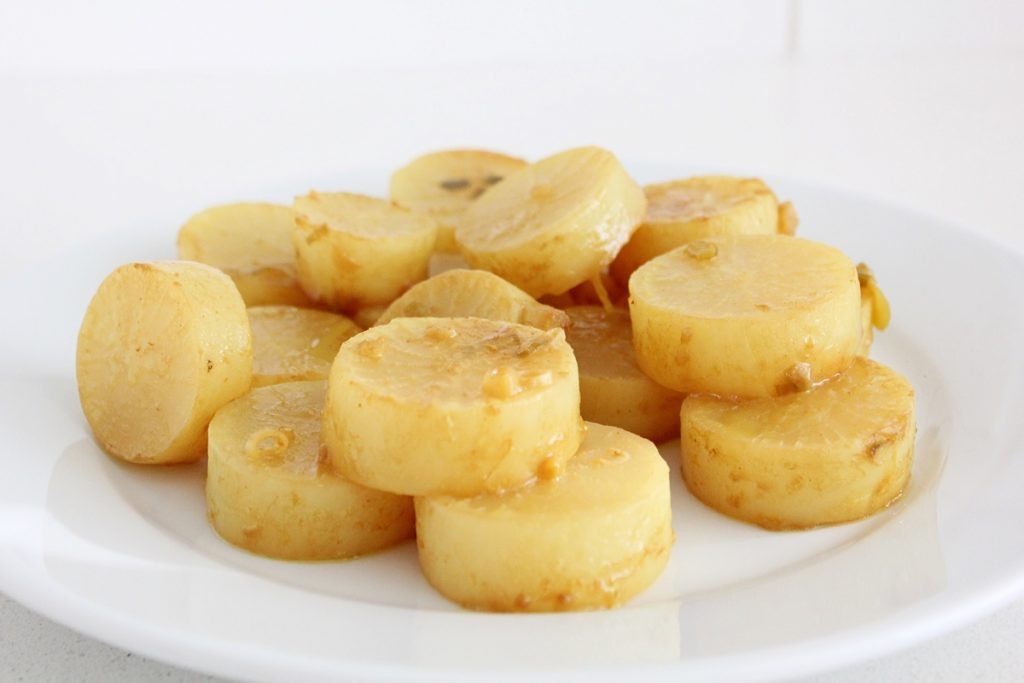
This is recipe is straight forward and so easy that I’ve made it several times in the past few weeks. The second time because my first batch mysteriously disappeared before I could take pictures. The third time because I discovered my nine-month-old loved it, so it disappeared again as a kitchen floor picnic (I’m actually worried I might not ever in my life be able to say no to her). And again, for pictures and then dinner, paired with these delicious Onigiri and Kale Gomae.

You don’t need to pair it with anything fancy though, a bowl of rice or buckwheat (my fave nutrient-dense/lower arsenic sticky rice replacements) and maybe a sprinkle of sesame seeds or hemp hearts will do the trick.

- 1 Daikon Radish (600-700g), cut into 1.5 inch rounds
- 3 c Water
- 2 Tbsp Miso
- 1 Tbsp Extra Virgin Coconut Oil
- 2 Kombu Sheets
- ¼ tsp dried Turmeric (1/2 tsp if using fresh)
- 1.5 tsp Lemon Juice
- 1 bunch Green Onions, thinly sliced (whites separated from green)
- Sea(weed) salt to taste
- Several grinds of black pepper (to enhance turmeric absorption)
- In a 11-ish inch pan, bring the Water, Miso, Kombu, Turmeric, white part of the Green Onions and Coconut Oil to a boil and turn down to a simmer.
- Stir to dissolve the miso and add the daikon.
- If the daikon isn't submerged, put the lid on for the first 15 minutes (don't worry about it if it is submerged).
- Let simmer, flipping the daikon over once or twice once the water level drops, for about 45 minutes (make sure the seaweed and daikon aren't sticking to the bottom).
- The daikon should be cooked and the liquid should be mostly evaporated, leaving a thick gravy.
- Add the lemon juice and pepper, toss the daikon around (taste for salt) and plate.
- Sprinkle with the green part of the green onions and serve.


Yummy